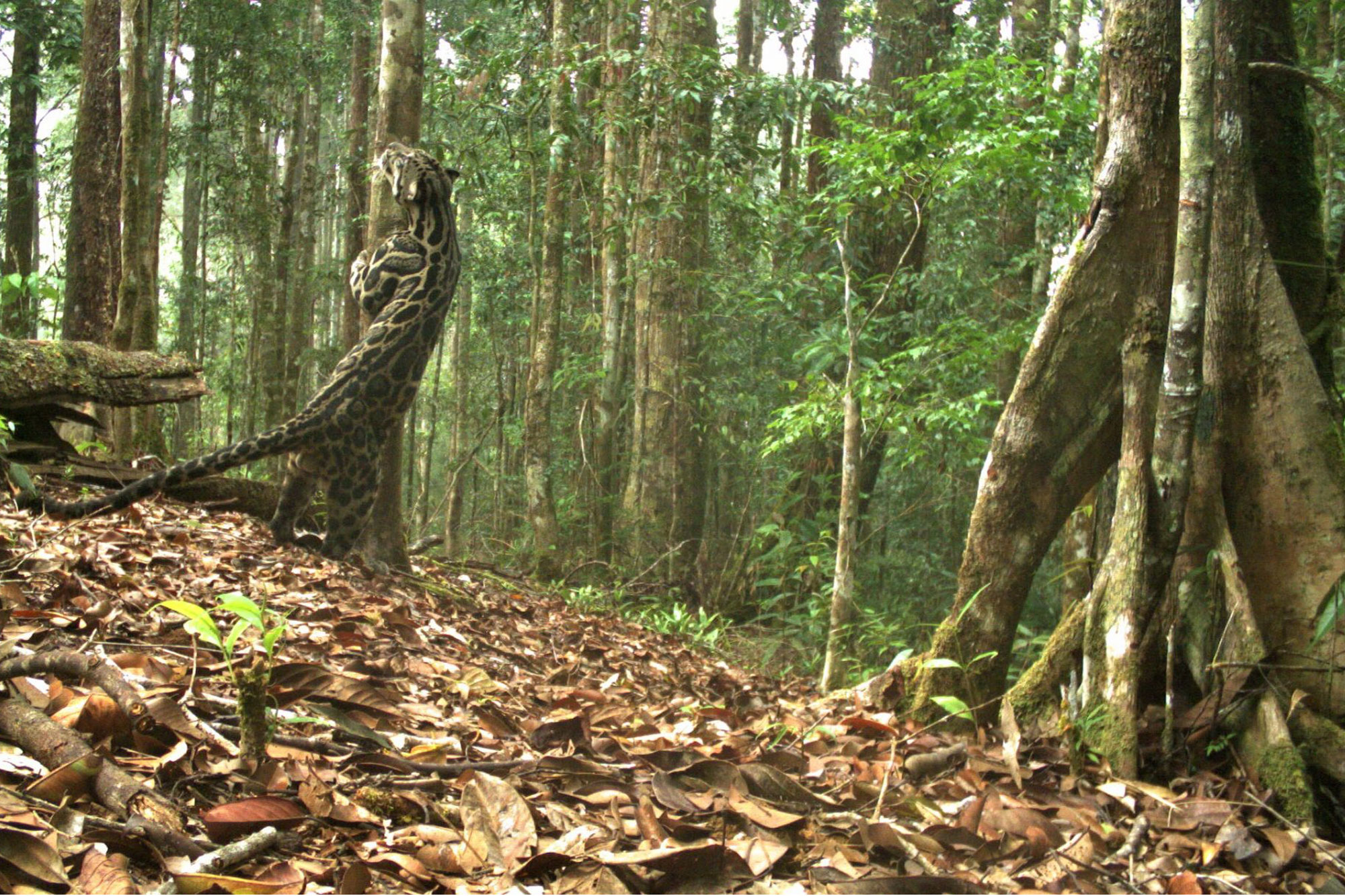Research from the Durrell Institute of Conservation and Ecology (DICE) has identified areas of degraded tropical forests in Borneo which, if better protected and restored, would most benefit wildlife conservation efforts.
Habitat degradation is a primary conservation concern in tropical forest ecosystems. Approximately 80% of the world’s remaining forests are considered degraded, prompting international efforts to restore them. Wildlife plays an important role in forest regeneration but is also adversely affected by logging. Therefore, prioritising forest for wildlife and restoration efforts remains a significant challenge.
Combining camera trap data with three-dimensional landscape mapping, researchers identified priority conservation and restoration areas in logged forests by examining the response of wildlife to changes in forest structure. The team focused on tropical mammals, including the Sunda clouded leopard, the Bornean yellow muntjac and tufted ground squirrel.
The study showed that crucial mammals disproportionately occupied structurally complex forest areas comprising tall canopies, diverse niches and increased plant area, all features of good quality forest habitat for wildlife and prioritised in conservation.
In contrast, these same mammals avoided areas with open canopies and reduced vegetation density, which typically result from intensive logging practices.
The findings highlight the importance of restoring forest structure to ensure ecologically important mammals remain. Without such restoration, many wild animals are likely to actively avoid degraded forest areas, leading to the eventual decline of ecosystem function.
Dr Nicolas Deere, lead researcher on the study, said, “Policy and management interventions that prioritise restoration and wildlife conservation are fundamental to achieving long-term restoration goals. Our findings demonstrate the importance of maintaining and enhancing structurally intact forests for many of our most charismatic species. By understanding the specific structural features that promote biodiversity, we can ensure that wild animals are better integrated into conservation and restoration planning for degraded forests.”
The study Maximizing the value of forest restoration for tropical mammals by detecting three-dimensional habitat associations was published in Proceedings of the National Academy of Sciences (PNAS).
The papers’ authors were:
Durrell Institute of Conservation and Ecology, University of Kent – Dr Nicolas Deere, Dr Matthew Struebig and Professor Zoe Davies
University of Melbourne – Dr Gurutzeta Guillera-Arroita
University of Cambridge – Professor David Coomes and Dr Tom Swinfield
University of Edinburgh – Dr David Milodowski
Universiti Malaysia Sabah – Dr Henry Bernard
South East Asia Rainforest Research Partnership (SEARRP) – Dr Glen Reynolds

